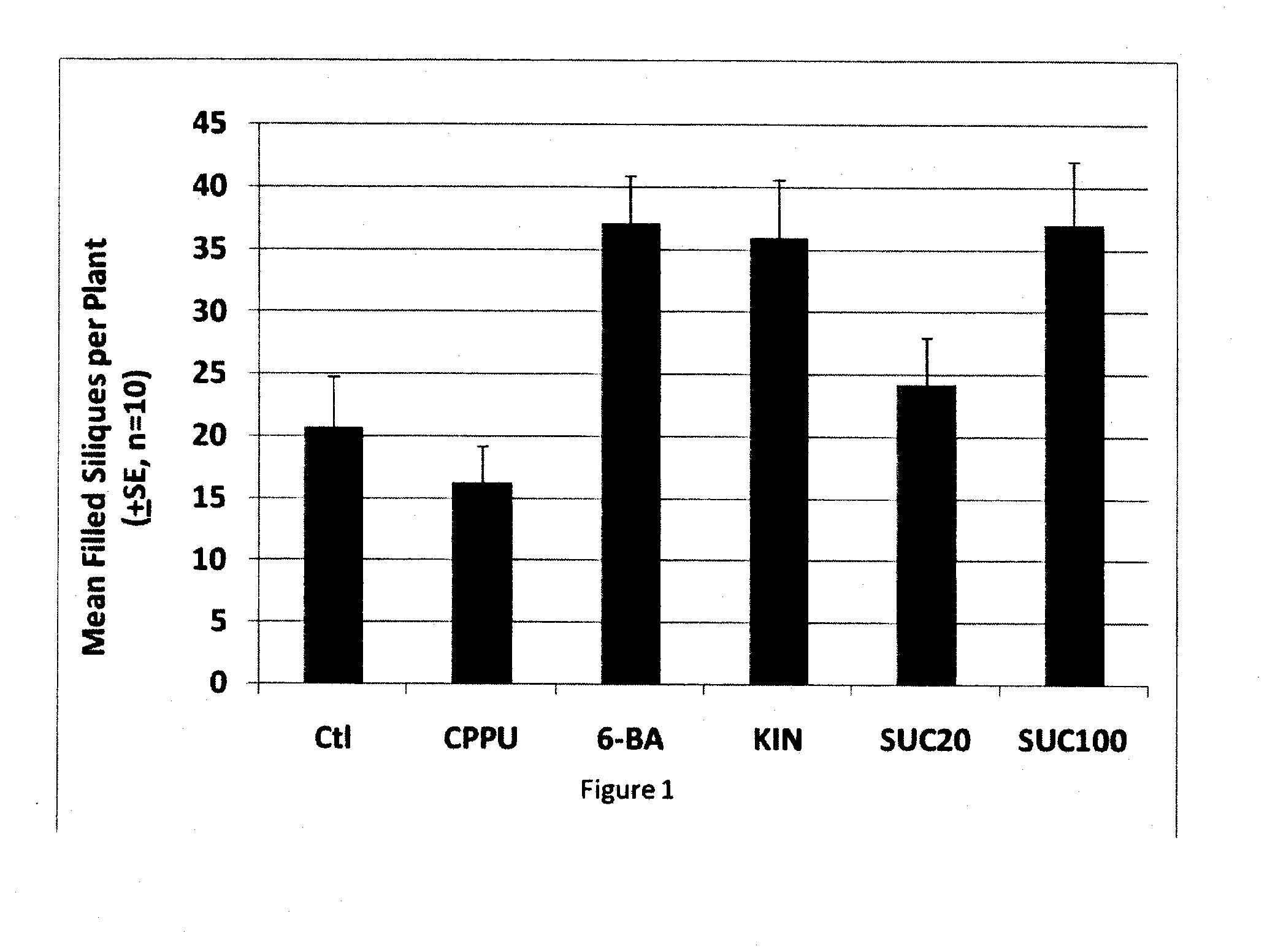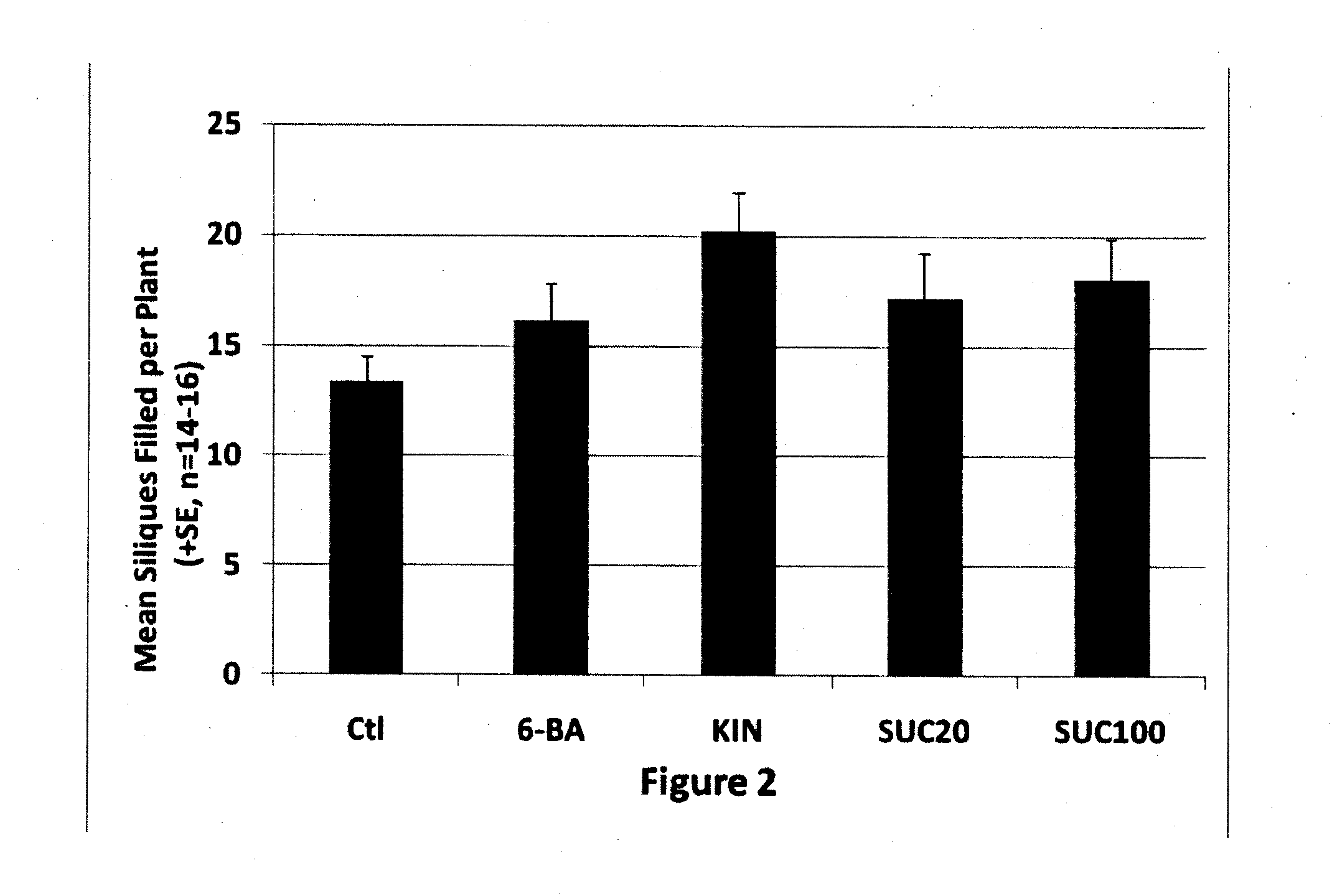Composition and method for stress mitigation in plants
a stress mitigation and plant technology, applied in the field of composition and method of stress mitigation in plants, can solve the problems of plant inability to produce nutrients, plant crop yields can be drastically reduced, etc., to achieve enhanced energy, increase the effect of cytokinin, and increase yield
- Summary
- Abstract
- Description
- Claims
- Application Information
AI Technical Summary
Benefits of technology
Problems solved by technology
Method used
Image
Examples
example 1
[0037]Experiments were conducted to determine the extent to which the plant growth regulator, cytokinin, when appropriately applied to plants growing in high temperature environments, enhanced sugar levels and increased the transfer of sugars to energy deficient portions of the plant. These experiments were also designed to determine whether the plant tissues under high temperature stress suffered from one or both of two potential problems: First, whether under high temperature stress, there is a deficiency of cytokinin in the plant tissue. Second, whether under high temperature stress, there is degradation of the cytokinin (which is a normal process to regulate the balance of plant growth regulators in plant tissues, in this case by reducing the amount of active cytokinin in the plant tissue).
[0038]The data from these experiments, as shown in FIGS. 1 and 2, clearly indicate that the problem suffered by plants subjected to high temperature stresses during their flowering phase is an...
example 2
[0043]In this example, the effect of the plant growth regulator cytokinin, specifically kinetin, applied at the beginning of flowering and two to four weeks thereafter to field-grown beans (i.e., lima beans) in Gustine, Calif. was observed. Growing temperatures up to approximately 35 degrees Celsius were recorded. Table 2 (below) provides the results of this replicated, randomized experiment. The lima bean yields were increased significantly (i.e., less seeds succumbed to autophagy and seed death or collapse) when the aqueous solution of kinetin was applied just prior to flowering to the lima bean foliage at either a rate of one pint per acre or two pints per acre. The difference of “t” test of 5% is significant.
TABLE 1Crop Yield for Kinetin Solution Application at Floweringfor Rates of 0 pt / acre, ½ pt / acre, 1 pt / acre and 2 pt / acreLima Bean YieldGustine, CAYear 2010AverageAverageAverageAverageYieldYieldYieldYieldAverage(lb / plot)(lb / plot)(lb / plot)(lb / plot)X-Cyte pt / acre00.512Average ...
example 3
[0044]In this example, the effect of the plant growth regulator / hormone, cytokinin, applied together with low concentrations of potassium, was observed. The cytokinin that was field-applied was X-Cyte, as previously disclosed. In these unreplicated field trials, conducted in Ohio over a three year period, potassium at ½ lb. to 1 lb. per acre and cytokinin at 1 pint per acre were applied to field corn. The average increase in yield attained by applying potassium, in addition to cytokinin, was approximately fifteen (15) bushels per acre.
PUM
 Login to View More
Login to View More Abstract
Description
Claims
Application Information
 Login to View More
Login to View More - R&D
- Intellectual Property
- Life Sciences
- Materials
- Tech Scout
- Unparalleled Data Quality
- Higher Quality Content
- 60% Fewer Hallucinations
Browse by: Latest US Patents, China's latest patents, Technical Efficacy Thesaurus, Application Domain, Technology Topic, Popular Technical Reports.
© 2025 PatSnap. All rights reserved.Legal|Privacy policy|Modern Slavery Act Transparency Statement|Sitemap|About US| Contact US: help@patsnap.com


